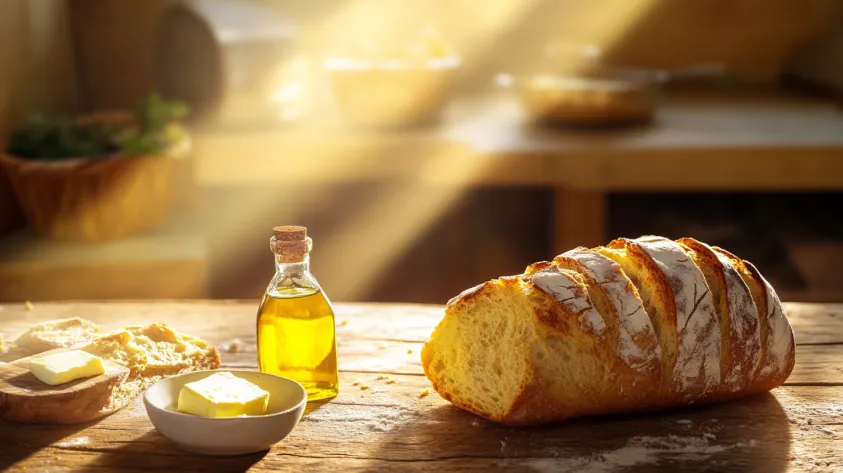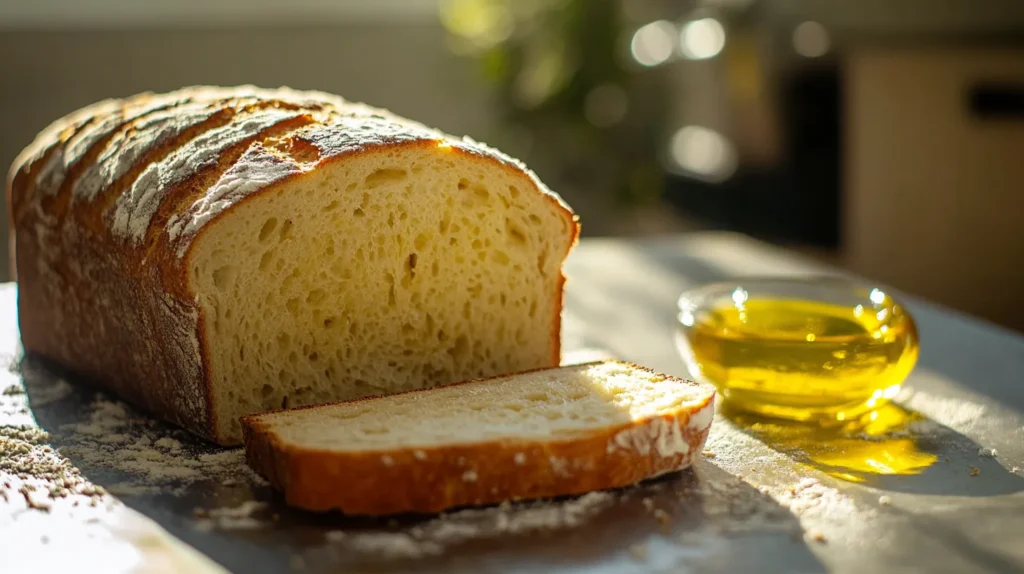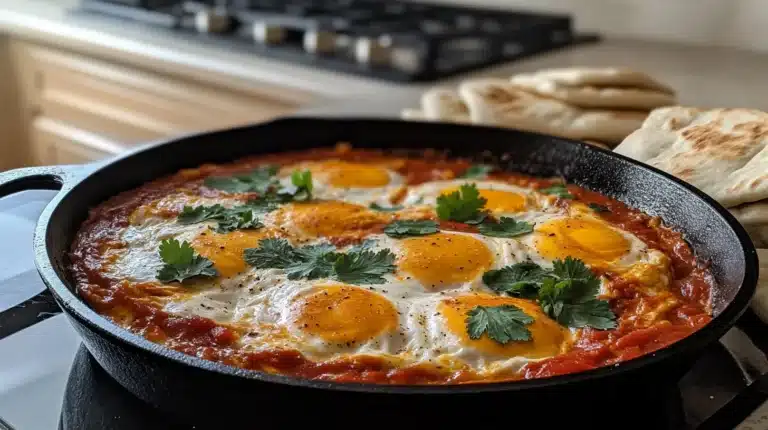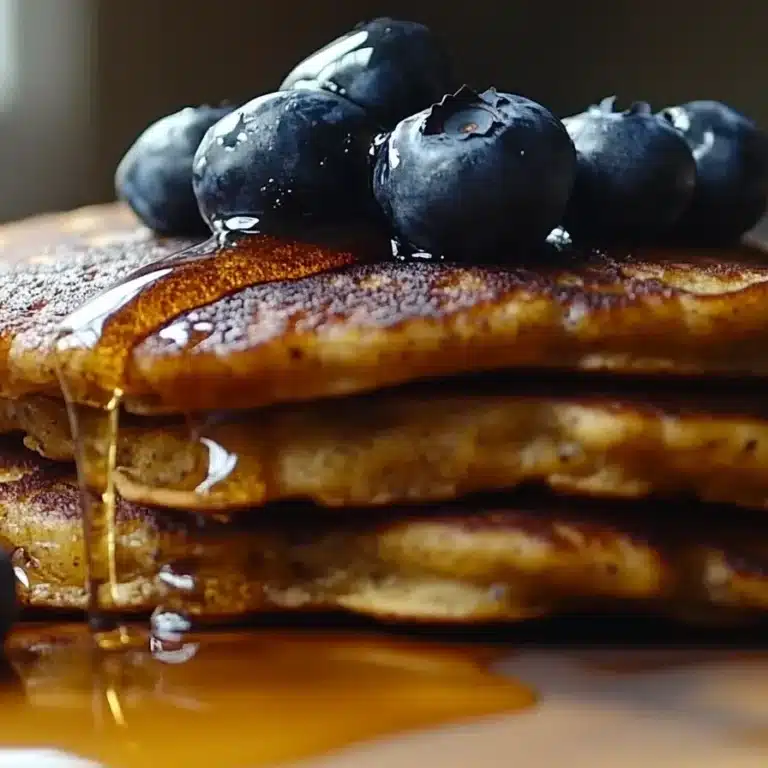Why Do You Put Oil Instead of Butter in Bread?

If you’ve ever wondered why some recipes call for oil instead of butter in bread, you’re not alone. It’s one of those little mysteries that can leave you scratching your head. After all, butter adds a delicious flavor, so why would anyone swap it out? Well, the answer lies in science, tradition, and practicality. By the end of this article, you’ll know exactly why oil can be a game-changer in bread making and how to use it effectively.
Introduction:
Bread-making is an art, but it’s also science. One crucial component in most bread recipes is fat. Whether it’s butter, oil, or something else entirely, fat has a job to do. It’s not just a random ingredient thrown in for flavor or fun—fat plays a vital role in creating the texture and taste of bread.
The Role of Fats in Bread Dough

What Does Fat Do in Bread Dough?
Fat works behind the scenes to make your bread soft and flavorful. Imagine biting into a slice of bread that’s fluffy and tender, not dry or crumbly. That’s the magic of fat. It coats the flour proteins, reducing the strength of gluten bonds. This process helps keep the bread softer for longer.
But fat does more than just texture. It also acts like a barrier, slowing down the staling process. If you’ve ever had bread go stale after a day or two, it’s likely because there wasn’t enough fat in the recipe. In short, fat is your bread’s best friend.
The Difference Between Oil and Butter
So, why choose oil over butter? For starters, oil is 100% fat, while butter is about 80% fat and 20% water. This difference might seem small, but it makes a big impact. The water in butter can cause your bread dough to be stickier and harder to manage. On the other hand, oil keeps things smooth and easy.
Also, oil creates a more uniform crumb structure in the bread. Butter, while delicious, can leave pockets of unevenness in the dough. That’s why you might find recipes for sandwich bread or focaccia opting for oil—it gives the bread that perfect texture.
“Oil works like a silent partner in bread-making—unseen but essential for the best results.”
Benefits of Using Oil Instead of Butter in Bread

Health Benefits of Oil in Baking
Let’s face it, butter is tasty, but it’s not the healthiest option. Oil, especially plant-based ones like olive or canola oil, offers heart-healthy fats. These oils are rich in monounsaturated and polyunsaturated fats, which can help lower bad cholesterol levels. If you’re looking for other heart-friendly recipes, check out the zucchini banana bread guide for a healthy twist.
Enhanced Texture and Moisture
Oil doesn’t just make the bread softer; it keeps it moist for days. Have you ever noticed that bread made with butter tends to dry out faster? That’s because the water content in butter evaporates. With oil, you don’t have that problem. Your bread stays fresh and delicious for longer—similar to what you’d find in this no-butter banana bread.
Easier Dough Handling
Here’s a practical benefit: oil makes the dough easier to handle. If you’ve ever struggled with sticky dough that refuses to cooperate, switching to oil can save the day. It creates a smoother, more pliable dough that’s a dream to knead.
“Think of oil as a lubricant for your dough it keeps everything running smoothly.”
Common Types of Oils Used in Bread Making
Not all oils are created equal, especially when it comes to baking bread. Each type of oil has its unique flavor, health benefits, and impact on the dough. Let’s take a closer look at some popular options.
Olive Oil
Olive oil is a favorite in Mediterranean bread recipes, like focaccia and ciabatta. It adds a rich, slightly fruity flavor that enhances the overall taste of the bread. Plus, it’s loaded with antioxidants and healthy fats.
However, olive oil has a distinct taste, so it’s best for bread where you want the oil’s flavor to shine. If you’re making a plain sandwich loaf, you might want something more neutral.
Vegetable and Canola Oil
Vegetable and canola oils are neutral oils that don’t have a strong taste. This makes them perfect for bread recipes where you want the other flavors—like herbs, spices, or grains to take center stage. They’re also budget-friendly and commonly available in most households.
Coconut Oil
Coconut oil adds a subtle sweetness and works well in sweeter bread recipes, like Hawaiian rolls or brioche. However, it can solidify at cooler temperatures, so you’ll need to melt it before mixing it into your dough. If you love the hint of coconut flavor, this oil is a great choice.
When Should You Use Butter Instead of Oil?
There are times when butter is the better option, especially if you’re aiming for a specific flavor or texture.
Flavor Considerations
If you want that rich, buttery taste like in brioche or croissants—there’s really no substitute for butter. It brings a unique flavor that oil simply can’t match.
Cultural and Traditional Recipes
Certain recipes, like Irish soda bread or classic French bread, call for butter as a nod to tradition. In these cases, the use of butter is as much about honoring heritage as it is about flavor and texture.
“Butter brings nostalgia and culture to the table it’s more than just an ingredient; it’s part of the story.”
Comparing Nutritional Values: Oil vs. Butter
If you’re health-conscious or just curious about the nutritional differences, this breakdown is for you.
Calories and Fat Composition
Butter contains about 102 calories and 11 grams of fat per tablespoon, while oil (like olive or vegetable) contains about 120 calories and 14 grams of fat. However, the fats in oil are often healthier due to their unsaturated nature.
Impact on Heart Health
Butter is high in saturated fats, which can contribute to higher cholesterol levels if consumed in large amounts. On the other hand, oils like olive and canola are rich in heart-healthy fats that support cardiovascular health.
Common Problems When Using Oil Instead of Butter
While oil offers plenty of advantages, there can be some challenges. Here are a few common issues and what you can do about them.
Dense or Heavy Bread
Sometimes bread made with oil can turn out heavier than expected. This often happens if the oil is over-measured or if there’s not enough yeast or leavening agent to balance the dough’s structure.
Dough Separation or Stickiness
Oil can make the dough more slippery, leading to separation during kneading. This issue is easy to fix by ensuring that you mix the dough thoroughly until all ingredients are fully combined.
Lack of Desired Crust Crispiness
Oil tends to soften the crust rather than crisp it. If you’re after a crispy crust, consider using a combination of oil and steam during baking or switching to recipes that naturally support a crisp crust.
Solutions to Common Oil-Based Bread Issues
For every problem, there’s a solution. Here’s how you can overcome the common challenges associated with using oil in bread.
Balancing Oil Proportions Correctly
A little goes a long way when it comes to oil. If your bread is turning out too dense, reduce the amount of oil slightly and see if it improves. A good starting point is 1/4 cup of oil for every 3 cups of flour.
Improving Dough Texture with Additives
If your dough feels too loose, adding a tablespoon of powdered milk or an extra spoon of flour can help firm it up. Don’t forget to knead the dough well—it’s key to developing a good structure.
“Think of dough like a puzzle: each piece (ingredient) must fit perfectly for the whole to work.”
The Science Behind Oil Substitution in Bread Recipes
The magic of baking bread is rooted in science. When you substitute oil for butter, you’re making a small change with significant effects on the dough’s chemistry.
How Oils Affect Gluten Development
Gluten is what gives bread its structure and chewiness. When you add fat—whether oil or butter—it coats the flour and partially prevents the formation of long gluten strands. With oil, this effect is even more pronounced because it fully envelops the flour particles due to its liquid consistency.
This results in a softer, more tender bread. Butter, with its water content, doesn’t coat the gluten as evenly, leading to a slightly firmer texture. So, if you’re aiming for that cloud-like softness, oil is your secret weapon.
Impact on Rising and Final Shape
Because oil is entirely fat with no water content, it doesn’t create steam during baking. Steam from butter can create pockets of air, giving some breads a different crumb texture. In contrast, oil leads to a more uniform rise and crumb structure. This makes it ideal for sandwich loaves, focaccia, and flatbreads where evenness is key.
Best Bread Recipes That Use Oil Instead of Butter

Looking for some recipe inspiration? These bread recipes are perfect examples of how oil can take your baking to the next level.
Classic Olive Oil Focaccia
Focaccia is famous for its golden crust, chewy interior, and aromatic olive oil finish. The generous use of olive oil in the dough and on top makes this bread irresistibly rich and flavorful. Want to take it further? Sprinkle some sea salt, rosemary, and garlic on top for a bakery-quality finish.
Soft Dinner Rolls with Vegetable Oil
If you’re craving fluffy dinner rolls that melt in your mouth, vegetable oil is your best friend. These rolls stay soft for days and pair perfectly with butter, jam, or honey at the dinner table.
No-Knead Artisan Bread with Coconut Oil
Yes, coconut oil works wonders in artisan bread! This no-knead recipe yields a crusty loaf with a slightly sweet and nutty flavor. It’s perfect for breakfast toast or dipping into soups and stews.
Expert Tips for Baking Bread with Oil
To get the most out of using oil in your bread recipes, check out these handy tips.
Choosing the Right Oil for Flavor
The type of oil you use can drastically change the flavor of your bread. For a neutral taste, stick with vegetable or canola oil. If you want to enhance the bread’s flavor, go with olive oil or coconut oil. Just be sure to avoid oils with overpowering flavors unless that’s what you’re going for!
Temperature and Mixing Considerations
Make sure your oil is at room temperature when you add it to the dough. Cold oil can slow down the rising process. Also, add the oil gradually while mixing to ensure it’s evenly distributed.
Conclusion: Making the Right Choice for Your Bread
So, why put oil instead of butter in bread? It all comes down to what you’re looking for—softer texture, healthier fat content, and longer-lasting freshness. While butter has its place in rich, indulgent recipes, oil shines in everyday bread-making. It’s simple, effective, and brings out the best in your dough. Whether you’re baking focaccia, sandwich bread, or dinner rolls, oil can help you achieve that perfect loaf.
FAQs About Using Oil Instead of Butter in Bread
Let’s wrap up with some common questions about using oil in bread recipes.
Can I Use Oil in All Bread Recipes?
Not necessarily. Some bread recipes, like brioche or croissants, rely heavily on butter for their flavor and texture. For simpler bread like sandwich loaves or flatbreads, oil is an excellent choice.
How Much Oil Should I Substitute for Butter?
A general rule of thumb is to use 3/4 the amount of oil for the butter called for in the recipe. For example, if a recipe calls for 1 cup of butter, use 3/4 cup of oil.
Does Oil Make Bread Softer or Denser?
Oil typically makes bread softer because it weakens the gluten structure. However, if you use too much, the bread can become dense. Stick to the recommended amounts, and you’ll get that soft, pillowy texture without the heaviness.
Print
Butter in Bread
- Total Time: 0 hours
- Yield: 1 loaf
Description
Butter in bread adds richness and tenderness, resulting in a soft and flavorful loaf perfect for any meal.
Ingredients
- 2 1/4 cups all-purpose flour
- 1 tablespoon sugar
- 1 teaspoon salt
- 1 tablespoon active dry yeast
- 3/4 cup warm water
- 1/4 cup melted butter
- 1 tablespoon olive oil (optional)
Instructions
- In a large bowl, combine the flour, sugar, salt, and yeast.
- Add the warm water and mix until a dough forms.
- Stir in the melted butter and olive oil (if using).
- Knead the dough for about 5-7 minutes until smooth and elastic.
- Cover the dough with a damp cloth and let it rise for about 1 hour, or until doubled in size.
- Preheat the oven to 375°F (190°C).
- Punch down the dough and shape it into a loaf.
- Place the dough in a greased loaf pan and let it rise for another 30 minutes.
- Bake for 25-30 minutes, or until the bread sounds hollow when tapped.
- Allow the bread to cool on a wire rack before slicing.
Notes
- The butter gives the bread a soft, moist crumb and a slightly sweet flavor.
- For a richer taste, brush the top of the bread with melted butter right after baking.
- You can substitute part of the butter with milk or yogurt for a slightly different texture.
- Prep Time: 15 minutes
- Cook Time: 25-30 minutes
- Category: Breakfast
- Method: Baking
- Cuisine: American







